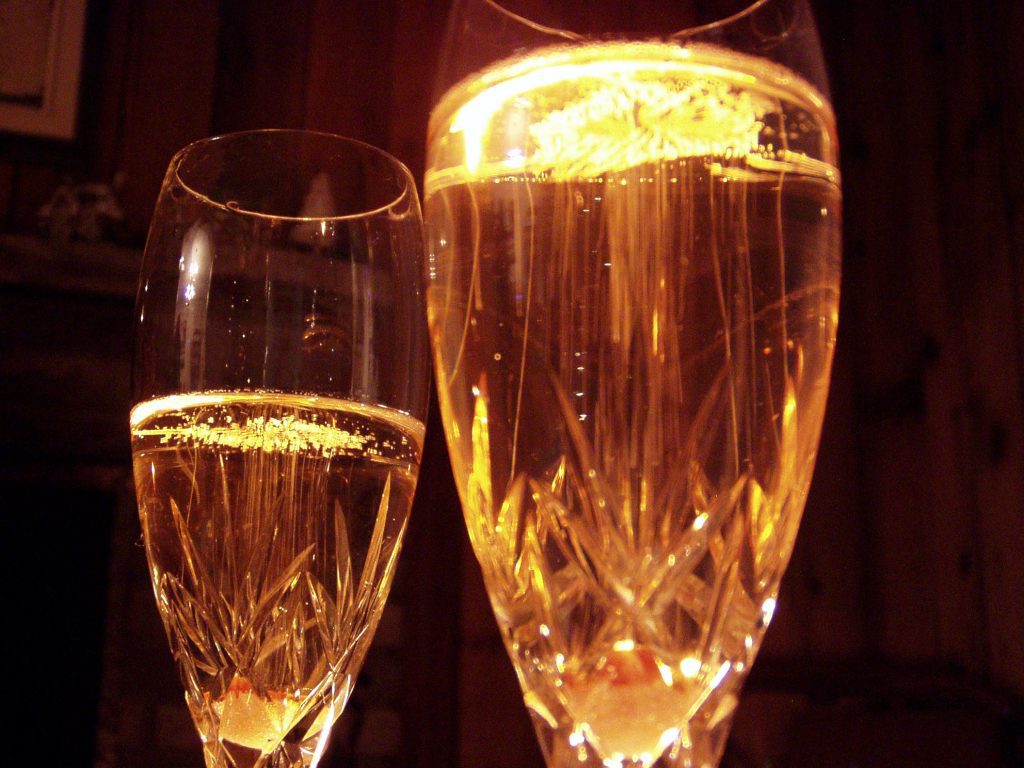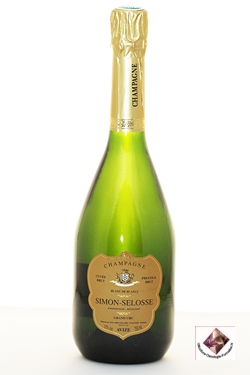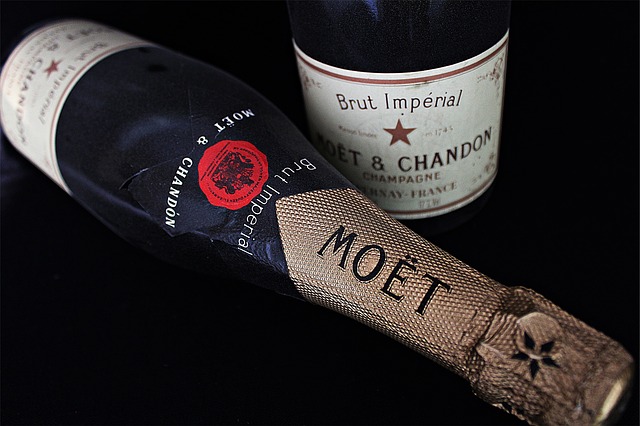CHAMPAGNE
In the United States Champagne corks have traditionally popped for weddings, births, graduations, new years and major celebrations, but this is changing as more and more people are enjoying what Dom Pierre Perignon discovered in the early 1700s, the taste of “the stars,” in a bottle.
Francophiles (and non-Francophiles alike) are taking Champagne tours, ordering Champagne at bars and are no longer reserving the “bubbly” for only special occasions. Historically, all Champagnes were rose-red in color, as the slow manual pressing prolonged the wine’s contact with colorants in the skin of the grape. As techniques evolved, pressing became more rapid and more careful, producing wines which were “white,” culminating in the Champagnes with clarity, those sought after today.
What distinguishes Champagne?
In part, it is the original French “méthode champenoise” developed by the Benedictine monk Pérignon. As cellar master and bursar of the Abbey of Hautvillers, he gathered grapes and wines from different vineyards and developed a method of pressing Champagne’s black grapes to yield white juice. He also used new glass from England which was strong enough to resist the natural effervescence of the wine and Spanish cork to provide the seal. The method is a painstaking, laborious and expensive multi-step process.
The most critical step being the winemaker’s choice of grapes. But the exact blending process remains the secret patent of each winemaker. After blending, the wine is placed in a permanent bottle with a blend of yeast and sugar that initiates a second fermentation in the bottle-causing the bubbles to form. The first grape pressing produces the finest juice or “cuvée,” the second yields the “taille.”
By French law, non-vintage Champagnes must age for one year and vintage Champagnes for three. During the aging process each bottle must be rotated daily by “remueurs,” who handle around 40,000 bottles a day. This is done so that sediment that has formed during fermentation works its way down the cap. “Dégorgement,” is the process to remove the sediment. Finally, it is the mixture of reserve wine and sugar added to the bottle at the end of the aging process that determines the Champagne’s sweetness, whether it will be Extra Brut, Brut, Extra-Dry, Demi-Sec, Sec or Doux.

In France all controlled “sparkling wines,” including Champagne must be made according to the “méthode champenoise”. In the U.S. less than 10% of sparking wines are made using the French method. Recently, The Champagne Wine Association decided that starting in 1997 non-vintage Champagne will have to be aged in the bottle for at least 15 months rather than the current minimum of a year and vintage Champagne will need to be aged at least three years in the bottle. Currently, vintage Champagne ages for three years, counting from the date the grapes are harvested rather than the date the wine is bottled. To best appreciate Champagne consider the following:
-
- The right glass: The capacity and height should provide the bubbles with
 enough space to form and rise to the surface, while keeping the temperature of the wine steady. The ideal glass is tulip-shaped. Do not use a glass that allows the aromas to disperse too quickly.
enough space to form and rise to the surface, while keeping the temperature of the wine steady. The ideal glass is tulip-shaped. Do not use a glass that allows the aromas to disperse too quickly. - Temperature: Drink Champagne well-chilled but never iced. Overchilling inhibits the aromas and flavors. Younger, livelier vintages should be served at about 44°F while a mature Champagne should be perfect at about 50°F. In a champagne bucket, a bottle from your cellar plunged into a mixture of water and ice should be the correct temperature in twenty to thirty minutes. In the fridge, lie the bottle down on the bottom shelf, three to four hours before serving. Do not ever place it in the freezer.
- Opening: Remove foil, undo wire muzzle and incline the bottle by 45 degrees, grasping the cork in your hand. Turn the bottle by holding it at the base, while permitting the cork to slowly rotate out of the bottle’s neck. Pour, filling the glass no more than two-thirds.
- The right glass: The capacity and height should provide the bubbles with
- Keeping open bottles: Special Champagne stoppers are available .
Visiting La Champagne Region
The Champagne region is divided into four areas: The Montagne de Reims, the Marne Valley, the Côte des Blancs and the Côte des Bars. Each has its own geographical identity. La Champagne comprises more than 300 crus, areas named after the microclimate and soil of a particular site or village where only three varieties of Champagne grapes grow: Pinot noir, Pinot Meunier, and Chardonnay.
The two main areas of interest are Reims-visit the Cathedral of Reims and Epernay. In Epernay you will also find the Musée du Champagne and in Hautvillers (an interesting side trip) you can visit the abbey where Pérignon made his discovery. Be sure to bring along a sweater when visiting the Champagne chalk caves since their temperature is perfect for Champagne but on the chilly side for visitors.
For more information contact:
Comité Interprofessionnel Du Vin De Champagne, 5, Rue Henri-Martin, 51200 Epernay, France.



